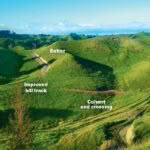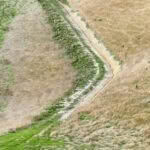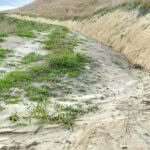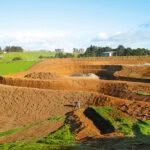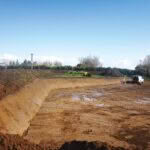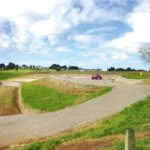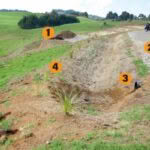Earthworks 101: A stress-free guide to transforming your property with a digger
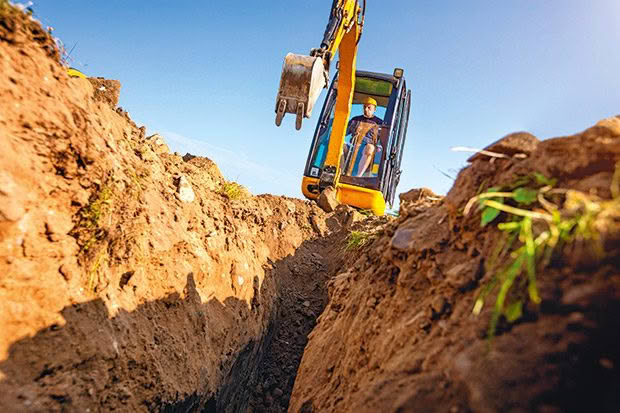
A beginner’s guide to hiring a digging contractor in New Zealand.
Words & images: Rachel Rose Additional images: Mark Dwyer, GreenBridge
When you live in the country, you will need to move earth at some point, whether you’re building a new home, a big shed, a drainage field for greywater, or somewhere for rainwater tanks.
Every block needs a good driveway and drains. Fences going through difficult terrain are best constructed on a smooth bench formed by a small digger. You might want to develop a pond, dam, swales, drains or wetlands.
But organising earthworks can be stressful if you’re new to it. A skilled digger driver can accomplish a phenomenal amount in a few hours and transform how your block functions; a bad digger driver may do the job wrong, or cause irreparable damage.
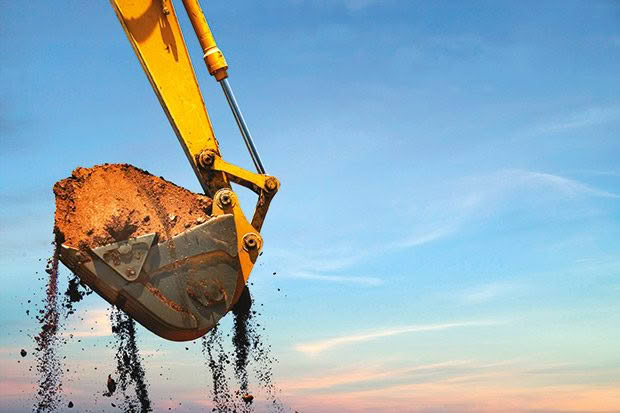
Take the case of a digging contractor hired to create a simple, marked-out driveway. The clients returned home to find most of a large bank and part of their building platform missing and the drive in the wrong place. That highlights lesson one of earthworks.
“Don’t go off to work when you have a digger on site,” says sustainable home and landscaping consultant Daniel Woolley of New Plymouth-based GreenBridge.
2 COMMON REASONS YOU MAY NEED A DIGGER
1. Driveway maintenance/repair
Access ways may get washed out and become difficult to navigate or impassable after rainfall. It’s possible that’s due to bad work by the original contractor. A poorly constructed driveway may be:
• built on an inappropriate grade or with inadequate materials; and/or,
• doesn’t disperse water properly due to a bad shape; and/or,
• wasn’t compacted, or was compacted poorly.
The steeper a driveway’s grade, the more difficult the construction. Other complicating factors include site-specific rainfall and soil type.
2. Building platforms
The standard for this work is laid out in the Building Code, providing a clear measure of successful completion. A building platform must be first excavated, to get to ‘good ground’, usually clay. Topsoil should be stripped off and stockpiled. Once the digger reaches a solid sub-soil, the platform is built back up again, using appropriate fill, and compacted in layers. One of the most precise tasks for a digger driver is ‘trimming’. They will use a laser level to ‘trim’ back just enough fill to create a level surface at the designated height.
HOW TO FIND A GOOD DIGGER DRIVER
Finding a good digger driver is not like hiring a tradesperson in town. Big earthwork companies build forestry roads, create subdivisions, and work on government contracts.
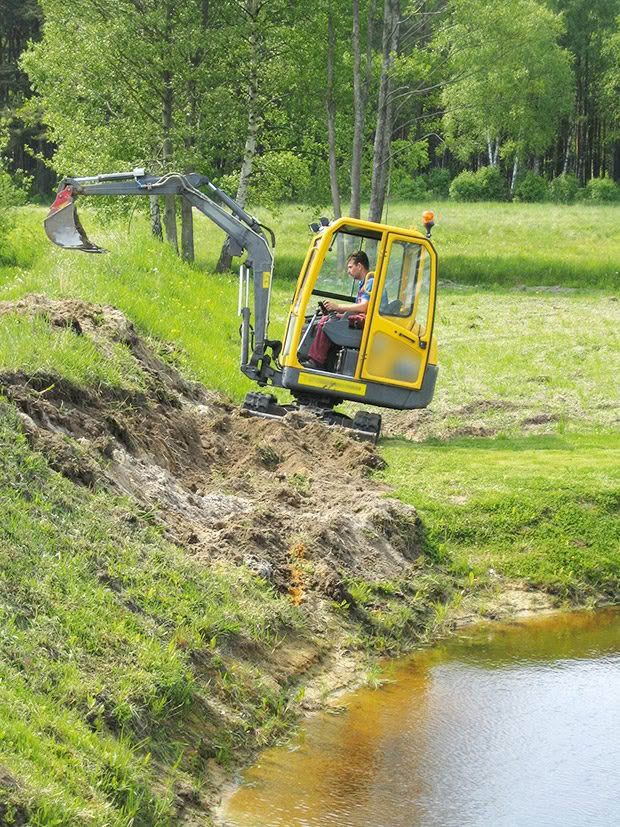
The machines and experts best suited to lifestyle blocks are usually local owner-operators with decades of experience in their region. However, having done something for a long time doesn’t mean a person is good at it, reliable or trustworthy. Industry sources agree on several strategies for finding a good operator.
1. Ask local block owners and large-scale farmers for recommendations, but check what kind of work they had done. Cutting a bench for a fence line is easy compared to putting in an all-weather driveway on a steep grade. Find an operator who has experience doing the specific job you need to be done.
2. Get someone local. Most diggers will need to be brought on site by truck; the further an operator travels, the higher the fixed cost before work begins. Experienced contractors will also stick to their patch, where they know the soils and climate challenges.
3. Plan well ahead. Often, the best operators will be busy for months in advance and prioritise work with people they know.
4. The first challenge may be getting one to return your call, especially if you’re new to the district. Name-drop at the earliest opportunity; mention who recommended them to you. Call them in the evening (or on a rainy day), as 12-hour workdays are typical.
5. Be clear about the work you want to be done.
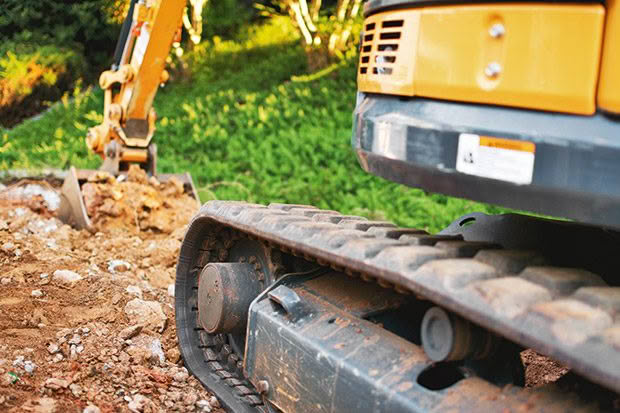
6. Use the right size digger for the job and the type of country. Too big and the machine may not be able to access the area or have enough room to operate, and it will be more costly to transport on site. Too small and the job will take much, much longer and may cost a lot more.
7. Ask for names of previous clients you can call. If you know enough to evaluate what you’re seeing, ask to have a look at work they’ve done. This can be tricky to assess, warns Alexandra-based digger driver David Bunn.
For example, a newly built driveway might look great, but it’s what’s underneath that counts. “It’s very difficult to tell (if they are any good) unless they are obviously really rubbish.”
8. Be willing to wait. Bad weather, unexpected finds (see box at right), and ‘scope creep’ (where a client makes multiple changes once the digger is on site, often because of poor planning) can cause delays. This has a bump-on effect for everyone booked in afterward. If you have hard deadlines, like pouring a foundation, allow plenty of time for delays, and communicate your timeline clearly.
9. Check with your neighbours if they have work they need to be done. You may be able to share the fixed transportation costs if the machine can be ‘walked’ between properties. Multiple jobs in one place are also more attractive to an operator.
THE COST OF MOVING THE EARTH
The standard pricing model is an hourly rate for the machine and operator, charged only for the actual time the machine is running (known as a ‘charge-up’ rate).
A typical contractor, depending on the size of the machine, will charge $140-200+ per hour – check whether this includes or excludes GST – and cartage fees to get the equipment on site. It’s common for jobs to be done on a charge-up basis, but if your budget is tight, this can be nerve-wracking.
Don’t overlook operators who will only provide an estimate, not a fixed quote. Kevin Adamson has decades of experience as a digger operator in Taranaki and says he doesn’t tend to quote on jobs for people he doesn’t know.
“You (spend) all that time quoting, and the moment you start work, (the clients) change their mind and want to do something else. Or they say, ‘Oh while you’re here, can you do that, that and that’ and every one of those extras is $100. Well firstly, that changes the price, and second, my next client gets put back.”
He’s also been burned when he’s pointed out a better way to approach a job, only to have the client relay those instructions to another contractor who has done the work at a lower price. Two good operators may estimate a job differently because of the capacity of their machines, and how far materials need to be trucked in or out.
“Trucking’s expensive,” says Kevin. “A quote comes down to where your quarries are and where you (dump) stuff.”
2 signs of a bad digger driver
Two simple ways to spot a poor and/or inexperienced operator:
• non-existent or poorly formed batters
• failure to separate and stockpile topsoil
WHY YOU NEED TO EXPECT THE UNEXPECTED
It’s possible you’ll run into things you can’t foresee when you start moving large amounts of dirt, says Nathan Burkepile. The regional co-ordinator for NZ Landcare Trust has project managed a lot of earthworks.
“There might be a change of soil types, or you hit drainage tiles. Lifestyle blocks tend to be old farms that have been subdivided; some of that drainage was put in 50 or 60 years ago, and even the farmer doesn’t know where it is.”
Breaking drainage tiles can immediately start to flood the site and is about the worst thing that can happen on a building platform. “You don’t know how much water they’re draining or where they’re draining it from,” says Nathan.
There’s far less risk of hitting underground utilities compared to doing earthworks in town, but if there is the slightest chance of hitting cables, use the free ‘dial before you dig’ service (www.beforeudig.co.nz).
CASE STUDY: WHANGANUI
New and improved tracks on the author’s 28ha forestry block near Whanganui. A culvert was also put in to allow access through a wet gully, and to help restore the narrow valley floor to a wetland.
A difficult corner on the hill track (pictured far right) was widened, and the uphill side battered to reduce the erosion risk. No planting or seeding was done at the time, and weeds have become a problem.
CASE STUDY: URENUI
Who: Hazel Kidner & Derek Stevens
What: building platform, drainage, shelter
Land: 4ha (10 acres)
Where: Urenui, 30km east of New Plymouth
Design: GreenBridge
Images: Mark Dwyer
When Hazel Kidner and Derek Stevens bought a bare block in Urenui five years ago, it had a lot of upsides: a 25-minute commute to their jobs in New Plymouth, good grazing for their horses, water on site (their boundary runs through the middle of a lake), and the steep contour meant they got it at a discounted price, compared to flat land.
It also had some challenges. When it rained, heavy torrents of water would sheet across the road above and fall onto their land, water-logging the soil. The best house site was on a 25-degree slope. The bitter southerly wind shrivelled small trees.
- Hazel and Derek’s property immediately after extensive earthworks were finished.
- A perfectly angled batter, with a 2m-high berm above it for winter protection.
- The site, ready for planting and building.
- The signs of a good operator and good design on this tricky, steep site include: 1. Topsoil put to one side. 2. The top bench is subtly dome-shaped, to allow water to drain away in all directions. 3. A culvert discharges into a small pond to ‘calm’ the energy of the water. 4. The area was planted quickly, to avoid erosion.
Fast forward nearly five years, and you wouldn’t recognise the sheltered oasis that is now home to the couple and a menagerie of pets. It’s a testament to the value of brilliant designers and a great digger driver. It took three weeks (and a lot of money) to reshape the land for their home, shed, edible gardens, orchards, and animal enclosures. It also took steely nerves. Hazel admits to reservations.
“It was terrifying and looked awful initially, like one of those open cast mines in Australia,” she says. “But we understood the vision and knew how fast things grow in Taranaki.”
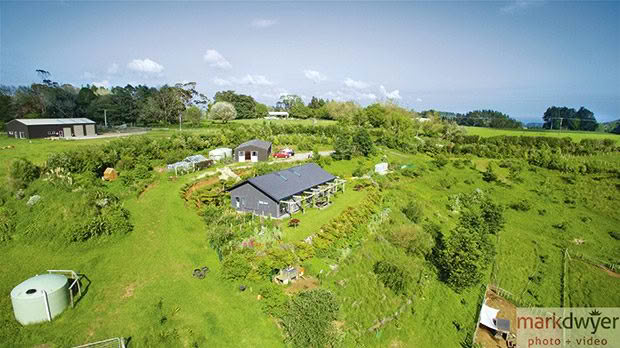
After.
Sustainable design consultancy, GreenBridge prepared the concept for the house and gardens. “They turned out to be a great find,” says Hazel.
The GreenBridge design called for two ‘benches’. The driveway enters onto the top bench where there’s a shed that’s almost as large as the house.
The house sits on the second bench, facing north, nestled back into a smooth batter that protects it from prevailing winds. High berms were constructed from topsoil excavated from the benches to create instant shelter, enabling fruit trees and vegetable gardens to get growing straight away.
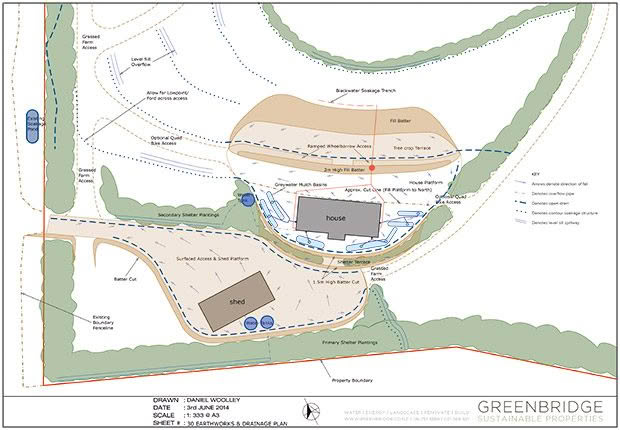
“Invest time in design,” says Hazel. The plan was part of a master design for her Urenui block. GreenBridge co-director Daniel Woolley briefed a trusted digger operator and supervised the work. Note the detailed instructions for subtle doming of the benches, so that water moves away from the buildings, and careful placement of level sills. These ‘calm’ any water that moves over the land during a storm and discharges it over grassed slopes, where it won’t erode the soil. Credit: GreenBridge.co.nz
“It has created a huge range of living and planting spaces,” says Hazel. “The swales work fantastically to capture water and manage its flow through the land, (even) in a heavy downpour. We now have a variety of micro-climates on the property, which suits the different growing conditions needed by various trees and veggies.”
GreenBridge co-director and landscape designer Bena Denton says it was important to cover the bare ground straight away. She designed a detailed planting plan, and Hazel and Derek planted everything themselves.
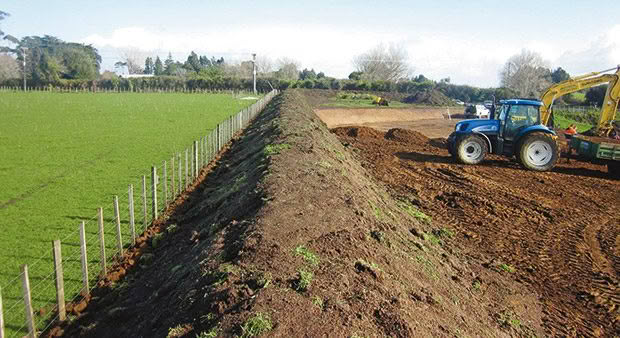
A 2m high berm was created along one boundary, using topsoil from the site, to create instant shelter. This is now covered in plants and trees.
“We roughly estimated how many plants we needed and ordered them through the council’s riparian scheme,” says Hazel. “We then marked out the lines and planting pattern and dug the holes, even before collecting the trees. It was a shock when we picked them up and saw how many we actually had to plant! We planted progressively as areas became accessible; the main bulk of the planting was done in four months.”
5 TIPS TO BEING A GOOD CLIENT
1. Understand the scope of your job and your local conditions (eg soil types, erosion risk, soil moisture levels at different times of the year). Be clear about the outcome you want rather than trying to control how it will get done.
2. Organise yourself. List all the jobs you need to be done at the outset. Refrain from being that person who says on the last day, “Oh while you’re here, could you just do ….”
3. When it comes to moving earth, just because you want something, doesn’t mean you can have it, warns Daniel Woolley. Listen to advice about why your idea won’t work or how it can be done better.
4. Don’t choose an operator based on cost alone. Saving a few hundred dollars now may cost you big in the future (for instance, if a poorly constructed driveway washes out).
5. Be available on the day. Make sure you can be contacted immediately if the driver needs to consult you. If there’s no cellphone coverage, you need to be on site. However, don’t hover over the bucket.
THE DIGGER DICTIONARY
Batter: a receding slope on the cut above a building platform or track. The degree of slope depends on the height of the batter and the soil type and other conditions. A well-shaped batter is crucial to reducing the risk of erosion.
Bench: a flat terrace.
Berm: a flat strip of land or raised bank.
Crowning: a common approach to shaping an access track, with the middle higher than the sides to help water drain away.
Water tabling: directs the water off a track or driveway, an alternative to crowning.
Digger or excavator? Technically, a ‘digger’ is a full 360° excavator. It’s a self-propelled tracked crawler or wheeled machine with an upper structure capable of rotating 360°. It excavates, elevates, swings, and discharges material using a bucket fitted to a boom and arm or telescoping boom.
DO YOU NEED CONSENT TO DO EARTHWORKS?
It depends on the type of work and your council’s district plan. A good digger driver can advise, but the responsibility is on you. Talk to your local council’s duty planner.
Nb: rural earthworks can fall under regional council jurisdiction, rather than the city or district council.
TIP
Ask locals when is the best time of year to excavate in your location. Autumn is generally best so you can sow grass or plant on newly-exposed soil. Otherwise, weeds will cover it for you.
MORE HERE
10 unusual edible perennials grown at a permaculture farm near Hastings
8 good reasons to chop down a tree PLUS what to do with a tree once it’s down
Love this story? Subscribe now!
 This article first appeared in NZ Lifestyle Block Magazine.
This article first appeared in NZ Lifestyle Block Magazine.
